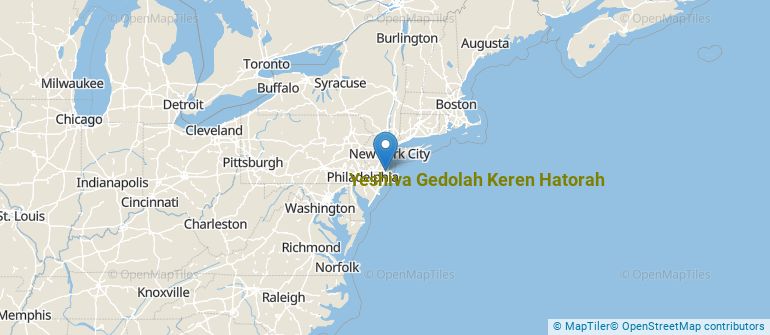 by our College Data Analytics Team
by our College Data Analytics TeamExplore the best ranked schools for the programs you are most interested in.
Yeshiva Gedolah Keren Hatorah was not ranked in College Factual's 2025 Best Overall Colleges report. This could be for a number of reasons, including lack of data.
Yeshiva Gedolah Keren Hatorah has an acceptance rate of 100%, so it is easier to gain admission to this school than some others. Still, the admissions staff will examine your application closely to make sure you're a good fit for Yeshiva Gedolah Keren Hatorah.
At Yeshiva Gedolah Keren Hatorah, the student to faculty ratio is 31 to 1. Compared to the national average of 15 to 1, this is somewhat high. This could mean that class sizes may be larger than they are at other colleges or universities or that professors may be required to teach more classes.
The freshmen retention rate of 93% tells us that most first-year, full-time students like Yeshiva Gedolah Keren Hatorah enough to come back for another year. This is a fair bit higher than the national average of 68%. That's certainly something to check off in the good column about the school.
During the 2017-2018 academic year, there were 156 full-time undergraduates at Yeshiva Gedolah Keren Hatorah.
The net price is calculated by adding tuition, room, board and other costs and subtracting financial aid.Note that the net price is typically less than the published for a school. For more information on the sticker price of Yeshiva Gedolah Keren Hatorah, see our tuition and fees and room and board pages.
Get more details about the location of Yeshiva Gedolah Keren Hatorah.

Contact details for Yeshiva Gedolah Keren Hatorah are given below.
| Contact Details | |
|---|---|
| Address: | 1083 Brook Road, Lakewood, NJ 08701-1239 |
| Phone: | 732-942-1811 |
| Website: | https://yeshivagedolahkerenhatorah.com/ |
| Most Popular Majors | Bachelor’s Degrees | Average Salary of Graduates |
|---|---|---|
| Religious Studies | 31 | NA |
Footnotes
*The racial-ethnic minorities count is calculated by taking the total number of students and subtracting white students, international students, and students whose race/ethnicity was unknown. This number is then divided by the total number of students at the school to obtain the racial-ethnic minorities percentage.
References
More about our data sources and methodologies.